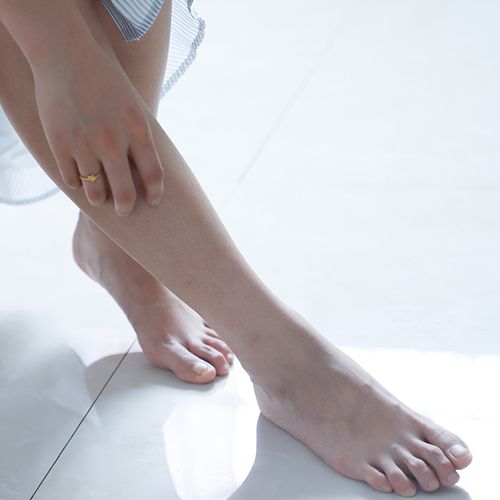Many people downplay the significance of foot problems. But that's a mistake. A foot problem may really mean that you have an undetected medical condition. For example, numb or painful feet can be a red flag for the damaged blood vessels and nerves that can occur with diabetes or peripheral arterial disease a circulatory problem that causes reduced blood flow to the limbs). Foot problems also may be associated with seemingly unrelated ailments, such as hip or back pain.
An effective way to identify the root cause of foot pain is to take a whole-body (holistic) approach that often can replace conventional treatments. Holistic approaches to everyday foot problems…
- Go barefoot. After spending day after day confined in tight or ill-fitting shoes, the muscles of the foot can weaken the same way an arm loses muscle tone when encased in a cast. Going barefoot in your home allows your feet to stretch, strengthen and find their natural alignment
Caution: People with diabetes should never go barefoot-this medical condition commonly causes nerve damage in the feet, which makes it difficult to feel cuts or other injuries. Also, do not walk barefoot on marble or other potentially slippery floors or if you have balance or vision problems. In all of these cases, wear sturdy slippers or similar footwear that protect your feet and provide good traction.
*To find a holistic podiatrist near you, consult The Holistic Option
- "Open" your toes. This gentle form of stretching can improve flexibility of the tendons, release tension and stimulate blood flow to the feet and the rest of the body.
It can help prevent foot ailments, such as hammertoe (in which the end of a toe curls downward) and Morton's neuroma (inflammation of a nerve between the toes that causes pain in the ball of the foot), and is useful for people suffering from painful foot conditions such as plantar fasciitis (described below).
What to do: Lace your fingers between each toe (imagine holding hands with your foot)...or use physical separators, such as pedicure toe dividers (available at drugstores) or gel-filled YogaToes (available at YogaPro, 877-964-2776, www.yogapro.com). Open your toes for five to 30 minutes at least five days per week.
Caution: People with rigid bunions should not use YogaToes—they may strain the ligaments and cause additional pain.
If you suffer from frequent foot pain, you may have one of these common foot problems…
- Bunion. No one knows exactly what causes this swollen, painful outgrowth of bone at the base of the big toe. Heredity plays a role, but podiatrists also suspect excess body weight and ill-fitting shoes.
Conventional treatment: Store-bought or custom-fitted orthotic shoe inserts to help reduce pressure on the bunion...and/or surgery to correct the position of the toe.
Holistic therapy: To relieve inflammation, massage the foot with peppermint, lemongrass, wintergreen or lavender oil. To make your own massage oil, start with a half teaspoon of a "carrier," such as almond oil or vitamin E oil, and add two to three drops of the healing oil. Warm the oil mixture in the palm of your hand before massaging your feet for five to 10 minutes daily.
- Plantar fasciitis. This condition is inflammation of the thick band of tissue that connects the heel to the base of the toes. The pain often excruciating-is most pronounced under the heel.
Anything that stresses the bottom of the foot can cause plantar fasciitis, including being overweight, suddenly increasing the amount of exercise you do or wearing shoes without arch support.
Conventional treatment: Cortisone injections to relieve inflammation...custom-fitted orthotic shoe inserts to more evenly distribute pressure on the foot.
Holistic therapy: Massage the arch of the foot by rolling a squash ball (a tennis ball is too large) on the floor from heel to toes. Use pressure that is firm enough to move the tissues without causing pain.
This massage reduces inflammation by moving accumulated acids out of tissues. Perform it daily until symptoms resolve. For plantar fasciitis, also perform this stretch twice daily on a regular basis.
What to do: Take one large step forward and bend your forward knee. Press the heel of the back leg onto the floor. Hold for 10 to 30 seconds, then switch leg positions. For added stretch, bend the back knee, as well.
Important: If your foot problems affect your ability to walk or don't heal or improve after two weeks of home care, see a podiatrist.
